Product trainings come in many forms, some more hands-on than others. But when it comes to complex product trainings in particular, trainings need to be able to immerse learners entirely in the learning experience. It is essential that the participants understand different facets of a product and are able to practice using and employing it in different real-life contexts.
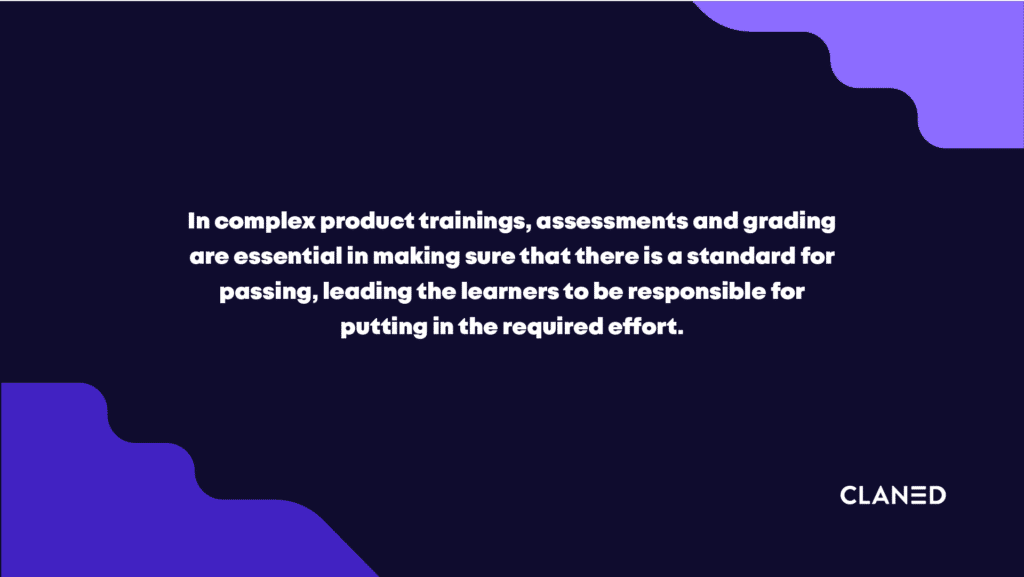
That’s why in complex product trainings, assessments and grading are essential in making sure that there is a standard for passing, leading the learners to be responsible for putting in the required effort.
But with that said, we often find that grading and feedback are also one of the most overlooked aspects of online learning.
Why? In many cases, the reason boils down to the facilitators feeling, well, uncomfortable with the grading aspect of complex product trainings.
Here are the two big reasons why:
- They believe grading will stress out the participants.
- They feel unsure and hesitant about making grading-related decisions.
But that’s why this blog post exists! If you or someone in your organisation is in the process of developing complex product trainings, here are a few insights that might help.
We’ll explore the purpose of grading, assessments, and feedback as well as how they all serve as a vital part of the learning process.
READ: How to Build a Super Successful Complex Product Training
Why Measure Learning?
When we talk about assessments, grading and feedback, what we’re talking about is essentially the larger theme of ‘evaluation’ – the process of examining and measuring learning within a learning program.
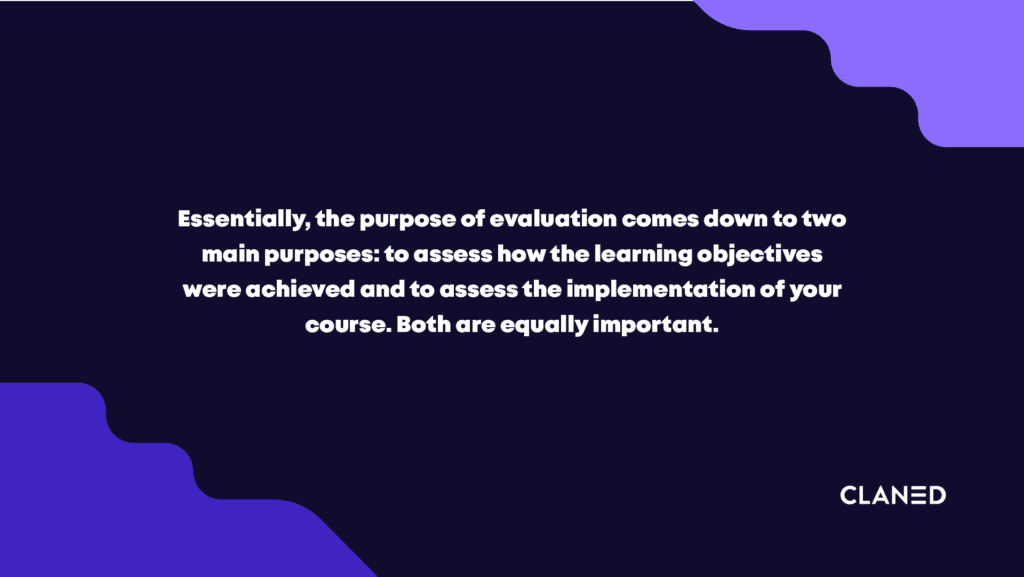
And why do we evaluate? There are four main reasons why you should measure learning:
- To know if the learners have reached the learning goals.
- To help the learner receive feedback on their performance.
- To get insights into where and how to improve your course.
- To assess the impact of your course.
Essentially, the purpose of evaluation comes down to two main purposes: to assess how the learning objectives were achieved and to assess the implementation of your course. Both are equally important.
Without assessing the learner’s performance, there is no way for us to know how our course has managed to steer towards successful outcomes. Moreover, if there are no criteria for passing the course it becomes impossible to measure its impact.
Consider the example of a sales course. Without assessment scores, it would be impossible for an organisation to tell whether the sales trainees took away any key insights from completing the course. Moreover, assessments can also help measure impact, such as determining whether passing the course helped lead the trainees to better sales numbers or improved performance.
The other great thing with evaluation and assessments is that the learner receives feedback that helps them grow, learn and develop. In fact, it is sometimes said that learning is “finished” only after evaluation. This is because without any feedback mechanism, the learner doesn’t know what they did successfully and what needs further improvement.
When learners are provided opportunities to test their knowledge, they receive feedback that helps them understand their own actions and the course content. It also helps them gather learning strategies, and provides helpful information on how to improve their performance in the future.
With that said, here’s how you can go about creating effective assessments and grading systems for your complex product trainings – in 4 easy steps:
Step 1: Figure out your learning goals
So you want to familiarise your learners with a complex product – which could, of course, could mean that learners are your customers or perhaps, an internal team. Either way, you probably have a good idea of what you’d want your learners to be able to do after they’ve completed the learning program.
That is why, to create effective assessments, the first thing you’d need to do is to lay that idea out in great detail.
- What should they first get familiar with?
- What other helpful bits of information would they need?
- What could easily be overlooked?
Noting down the answers to all these essential questions will help you out in your design process. Setting clear and measurable learning goals is key to impactful assessment and grading because those are the elements that you will need to be testing.
Want to know more about setting learning goals? Read our blog post here.
Step 2: Create assessments that measure your goals
Once you have specific and measurable learning goals in place, the natural next step in the course creation process is to determine how you’ll know whether the learning goals are really being met.
So, how do you measure learner progress on your learning goals?
Now, there are many ways to do this – ranging from multiple-choice questions and essays, to debates and full-fledged projects.
The important thing is to consider which of these assessment types are aligned with your learning goals:
- What makes sense?
- What are the different question types truly testing for?
- With what question type or assignments can you best find out that the learners know what they are supposed to?
Keep in mind that good assessments don’t just make for a great training experience. They also have immense real-world value.
Do you want learners to know the different features of your platform? Teach them the product’s various elements and then ask them to create their own project using those features.
Finally, quiz them on those elements and features and determine whether they truly understood the essentials of the product. In the course modules that follow, you can then create assessments that ask learners to build on the previous project.
It’s important that the assessments are varied and provide a complete picture of learning.
For instance, quizzes and knowledge checks are great to see whether learners remember what they’ve just read. But they don’t tell you if they can actually apply it to practice. Therefore, it’s crucial that your assessments also provide learners with the opportunities to practice applying the information and skills that they have just learned.
To know more about assessment types and how to use them, check out our blog post on the different ways to do online assessments.
Step 3: Set up grading
After you’ve created your assessments, it’s time to dig into the grading system.
Now, we know that the grading process can sometimes make course builders and facilitators uncomfortable, and trust us, we understand. But that is exactly why having a proper grading system comes can be so essential!

When you have a set grading framework in place, it takes a lot of the uncertainty and guesswork out of the process, ensuring that your assessments are as fair and accurate as possible.
Here’s what you need to know first: with grading, it all comes down to what factors are relevant to the overall project and learning goals. The instructions, the use cases, the features you want to highlight, the functionalities that will be most relevant – what do you want this complex product training to impart? Those are the things that you will want to reflect clearly in your grading.
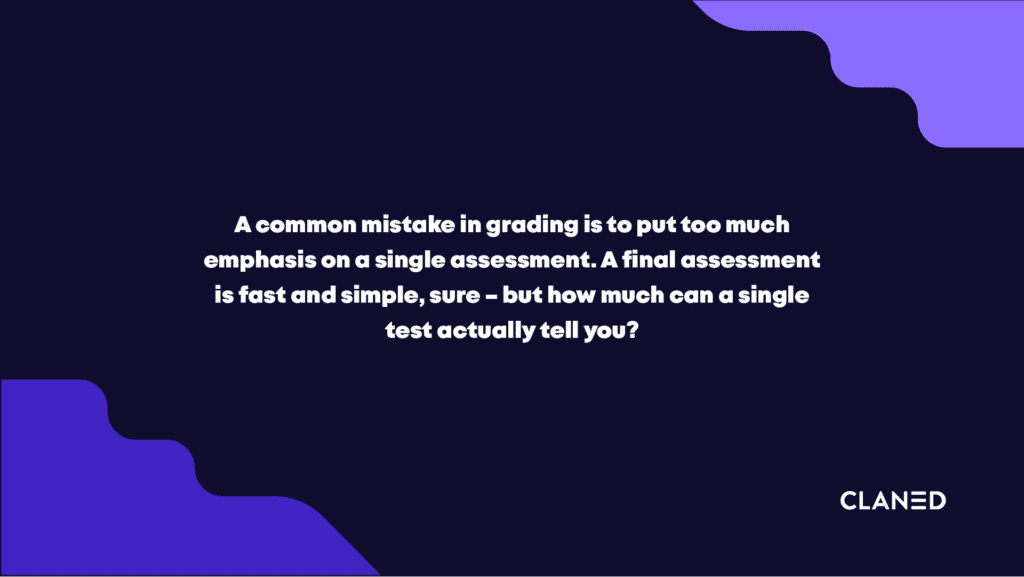
One of the most common mistakes in grading is to put too much emphasis on the final assessment and leave out all other elements that could provide a more holistic view of your learners’ progress and development. A final assessment is fast and simple, sure – but how much can a single test actually tell you?
It’s also important to note that your grading settings will ultimately determine what your learners will focus on during the program. If you place 100% of the grade in the final assessment, that’s what learners will focus on and all other activities will be considered ‘extra’ or unworthy of the effort.
That’s why it’s a good idea to use variety with grading. And it’s also the reason why with Claned, we aim to offer a ton of flexibility in grading.
For instance, your grading system on Claned can factor in how interactive a learner has been during a training program.
This is great if you’d like to know how much learners are contributing to the learning of not just themselves but also others. In practice, Claned allows you to give a learner points for the number of comments they share and content progress they make. These are considered participation marks, which reflect their activity during the course.
You can also adjust grading to include other items such as projects, presentations and attendance at sessions. On Claned, you can also determine how much each of these items contributes to the final grade. For example, regular assessments can count for 50% of the grade, while commenting can count for 20% and content progress for 30%.
All of that is to say that it’s worth thinking about all the factors that contribute to good learning in your specific complex product training program. It’s not just about acquiring knowledge or getting familiar with the specifics of the product, it’s also about creating an interactive learning environment.
Step 4: Provide feedback
The final step in any online course is feedback.
As a learner, your grade doesn’t tell you much about what you did right and what needs improvement. That’s why it is essential to have a feedback process in your complex product training program.
Through feedback, learners can understand their learning choices, their actions during the learning process, and the content better.
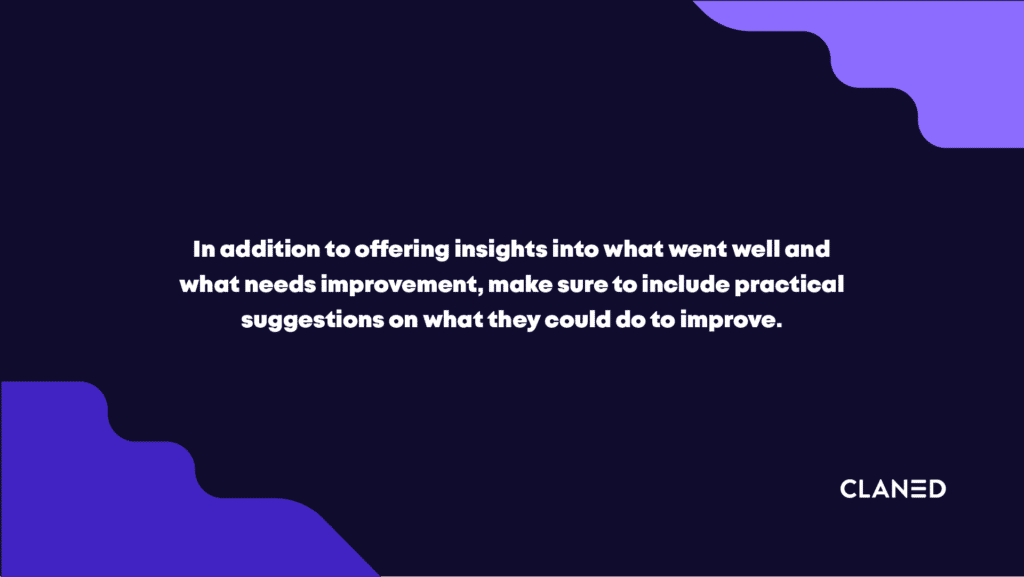
And learners can always benefit from a little extra guidance. So in addition to offering insights into what went well and what needs improvement, make sure to include practical suggestions on what they could do to improve. Point them in the direction of the relevant course materials, suggest additional reading and maybe even provide new, extra materials for them to go through.
One of the easiest ways to give feedback is by adding explanations when you offer the right answers in a multiple-choice questionnaire. When learners can view their performance along with all the correct answers and explanations, they immediately gain new information that can guide them forward.
You can also provide feedback through the assessment tool. This could especially be useful in cases where learners have to respond to short answer questions or submit attachments, such as a report. Justify your grading to them by telling them what they did well and what they might want to focus on in the future.
In case you have a large class and are unable to give personal feedback to each learner, consider using the announcement tool as a way to give general feedback.
All you need to do is to clarify what factors your evaluation was based on and what kind of general trends you observed in the course and the assessments. In fact, this might be a great time to offer extra reading material for those who might be interested in delving deeper into the topic!
Finally, if you have a learning experience platform like Claned, you can also communicate and offer feedback to your learners using our Chat tool. It’s a great way for learners in smaller classes to get in touch, respond and ask further questions about your feedback.
Parting Words
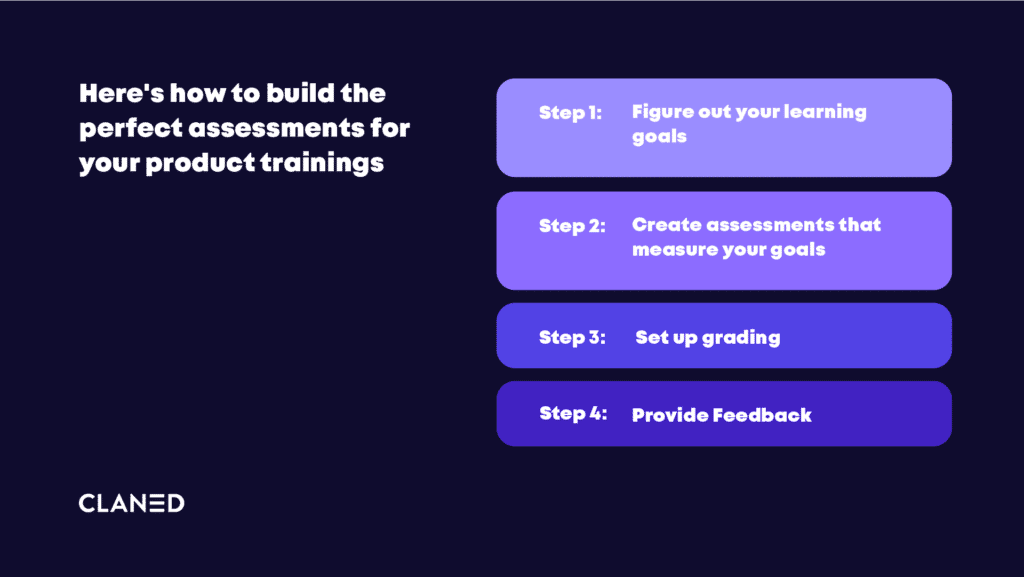
Assessments and grading can be tricky things to do, but only when their purpose remains unclear. That’s why it’s important to remember that the goal of assessments and grading is to see if learning has taken place for your learners in the way you designed your complex product training to do.
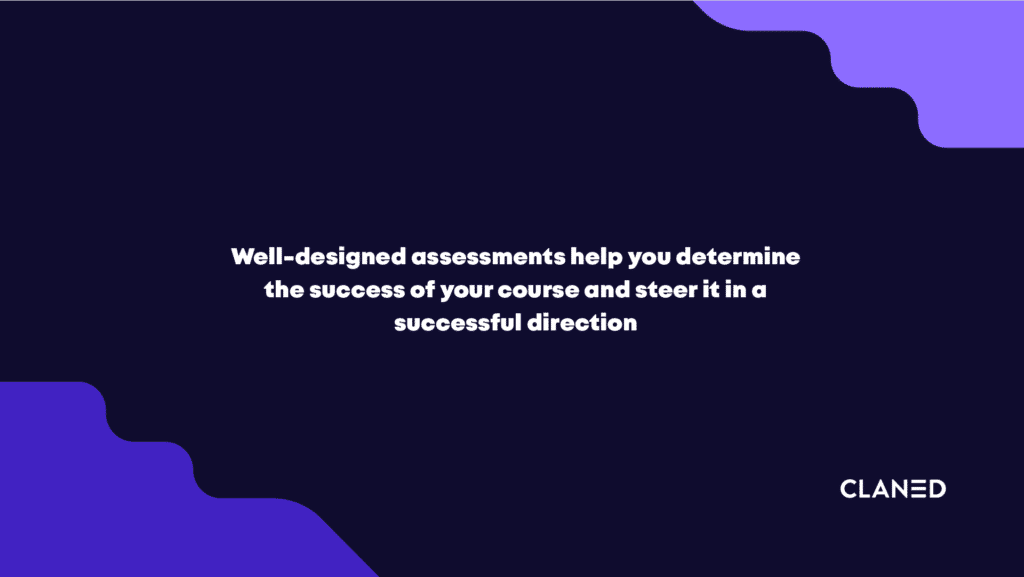
Well-designed assessments help you determine the success of your course and steer it in a successful direction. And for learners, it’s the perfect opportunity to gain some form of feedback on their course and performance, which is a key component of effective learning.
Here’s hoping that this post gives you a little shot of confidence to design more effective grading and assessments for your complex product trainings!
Want to get your customers or internal team excited about a product, too?
At Claned, we help design complex product trainings that people actually love participating in!
Get in touch with us at sales@claned.com!







